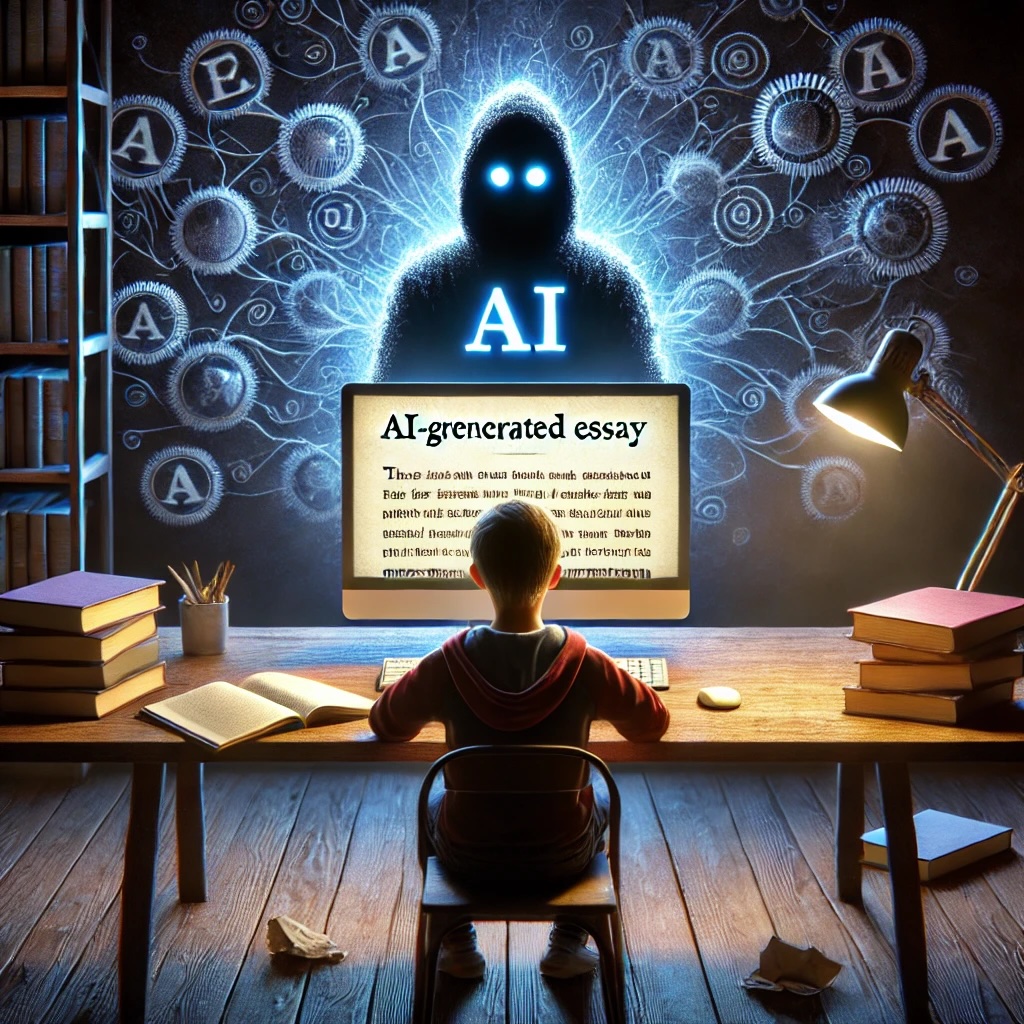*A former version of this post lacked specificity surrounding AI and grading. The LTC is committed to providing accurate, appropriate information about AI to the campus community. We apologize for the error and have since updated the post to include expanded explanations. This serves as an important reminder that AI use is continually changing and adapting as AI tools expand and become integrated into daily life; if you have additional questions or concerns about grading, FERPA, and how these interplay with AI, please reach out to the LTC.
With AI playing a growing role in education, it’s the perfect time to explore its capabilities! In this post, we will unwrap some advanced AI tips to streamline your workload, your students more engaged, and your time more productive. Whether you’re looking for shortcuts or delightful ways to enhance your classroom experience, these AI “tricks” and “treats” will give you something sweet to work with.
Writing Assistance
Trick: AI isn’t just for brainstorming anymore—it can help you draft full lesson plans or emails. Tools like GPT-4 can “ghostwrite” introductory materials or tricky concepts, saving you hours of planning.
Treat: You can customize the tone and detail, ensuring that the content matches your style. Don’t forget to double-check for accuracy, though—AI still needs a guiding hand to avoid any spooky surprises!
Example Prompt for lesson plan generation: “Create a 60-minute lesson plan for a college-level biology course on the topic of cell division, including an introduction, main points, in-class activities, and discussion questions.”
Creative Prompts
Trick: When it comes to sparking creativity, AI can conjure up thought-provoking prompts for discussions, writing assignments, or even projects. Platforms like ChatGPT can generate unique questions or perspectives that challenge students to think beyond the standard syllabus.
Treat: This keeps content fresh and engaging without you having to brainstorm constantly. Plus, it can be tailored to any subject area or difficulty level, making your lessons more dynamic.
Example Prompt for writing prompts: “Create a thought-provoking prompt for a reflective essay on the role of technology in modern education.”
Speeding Up Feedback
Trick: Give students the option to submit a rough draft of their work to be scored against a rubric you built. It can offer an initial analysis and provide a rough score that students can use as feedback to improve their assignment. **If student work for a grade is submitted to AI platforms without their knowledge, it may be considered a FERPA violation; exercise caution when using AI and ensure student privacy is protected.
Treat: You maintain control and add the human touch when grading!
Example Prompt for rough draft feedback: “Use the following rubric to evaluate this research paper: [insert rubric and paper]. Provide a score and brief explanation for each section.”
AI Magic for Engagement
Trick: Looking to increase student engagement in hybrid or online courses? Use AI-driven chatbots or discussion board assistants to keep conversations lively outside of class hours. These AI assistants can help moderate discussions, answer common questions, or prompt students to delve deeper into the content.
Treat: This keeps your students engaged around the clock, and you can track interaction patterns to adjust your teaching strategies where needed.
Example Prompt for discussion board moderation: “Generate three follow-up questions to stimulate discussion on a student’s post about AI in healthcare.”
Enhanced Accessibility
Trick: AI-powered tools like auto-captioning services and transcription software make your content more accessible to all learners, including those with disabilities.
Treat: These features ensure inclusivity in your classroom, offering all students a treat by making sure educational materials are engaging and accessible for everyone.
Example Prompt for generating captions: “Transcribe and generate accurate captions for this video lecture on ancient history: [insert video/audio].”
Whether you’re summoning AI to handle mundane tasks or conjuring up creative ideas, there’s no shortage of treats when it comes to using AI in the classroom. Keep experimenting, and let these tricks make your teaching magical! Happy Halloween!








